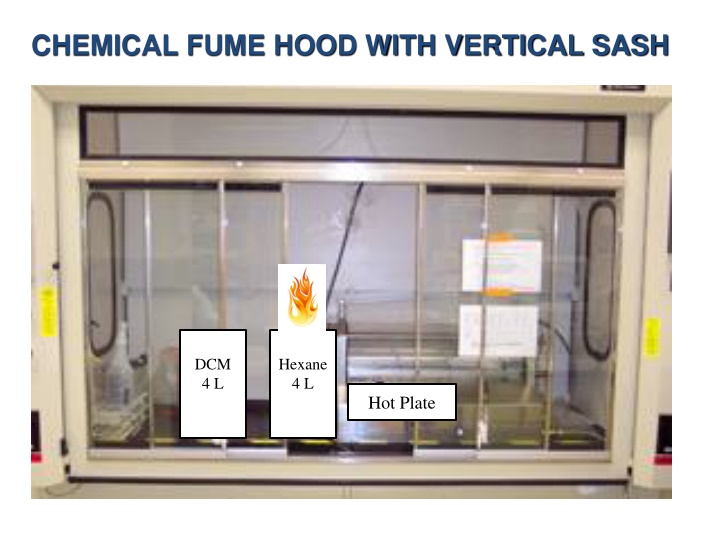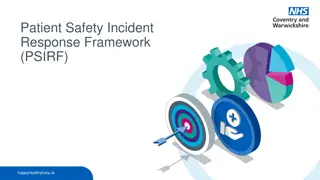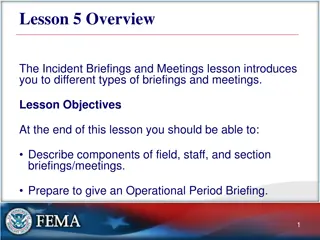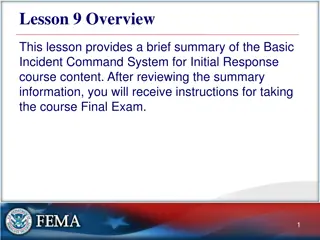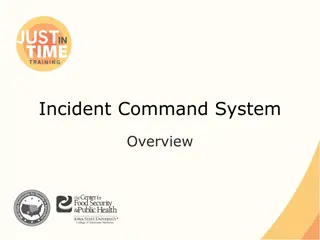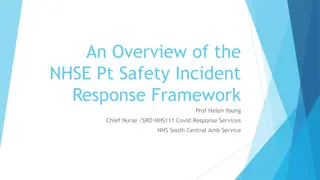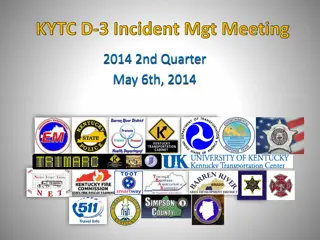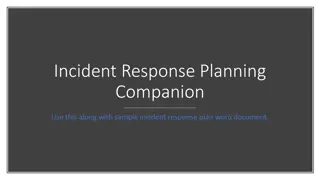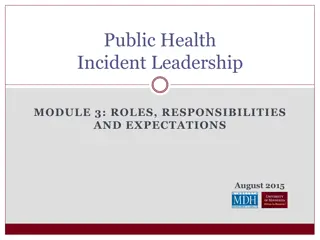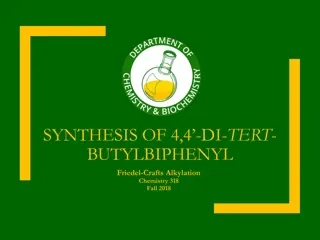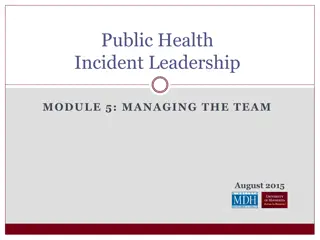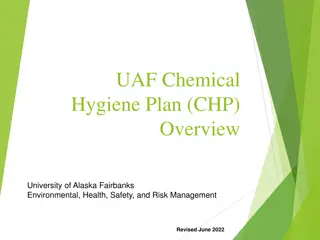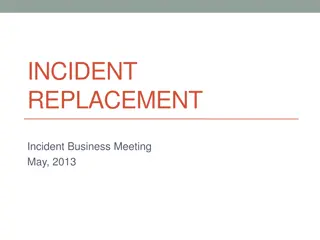Chemical Lab Incident Response at Purdue University
On February 5, 2004, a chemical fire incident occurred in a chemistry lab at Purdue University. Despite the fire starting during a student experiment, prompt response from university staff and the Fire Department ensured the fire was quickly extinguished, with minimal equipment damage. The incident highlights the importance of proper safety protocols and emergency preparedness in laboratory settings.
Download Presentation

Please find below an Image/Link to download the presentation.
The content on the website is provided AS IS for your information and personal use only. It may not be sold, licensed, or shared on other websites without obtaining consent from the author.If you encounter any issues during the download, it is possible that the publisher has removed the file from their server.
You are allowed to download the files provided on this website for personal or commercial use, subject to the condition that they are used lawfully. All files are the property of their respective owners.
The content on the website is provided AS IS for your information and personal use only. It may not be sold, licensed, or shared on other websites without obtaining consent from the author.
E N D
Presentation Transcript
CHEMICAL FUME HOOD WITH VERTICAL SASH DCM 4 L Hexane 4 L Hot Plate
Department of Chemistry Purdue University To: Ms. Carol Shelby From: David R. McMillin Date: February 20, 2004 Re: Wetherill Fire On the afternoon of February 5, a fire started in WTHR 250 when a student was trying to extract product after a reaction. Two students fought the fire with extinguishers, but were unable to put it out. They left as a sprinkler came on. Then the Fire Department arrived. I am writing to express gratitude for the University staff who responded. The Fire Department reacted quickly as did REM. I was at a seminar in the Medicinal Chemistry Department, and in that time period of just over an hour, the fire had started, been extinguished, and the clean up was underway. Maintenance was vacuuming up water in the lab as well as the floor below. That evening, Steve Gauger and his staff verified that the remaining chemical stocks were secure, and Tom Adams came to survey the building. Early the next morning Gauger and his staff returned to dispose of the waste the fire created. I received a letter, dated February 6, from Tom Adams who advised us how to seek replacement items. He also authorized issuance of a work order to start repairs on the plumbing which suffered some insulation damage. Thanks to the system in place, the damage to equipment was not that great, and the recovery is going smoothly. I commend the people who have helped. Memorandum Lake of water. Multiple Mass Spec instruments below! Lucky leak.
Supervisor (print): Dr. David R. McMillin Assessment Date(s): 2/16/04 Signature: Location(s) posted: WTHR 248 Task: hands-on work or being within reach(a) of potential hazards of described activity/items: Volume > 10 mL any unshielded(b) corrosive(c) liquids, organic liquids or liquid mixtures, or toxic(d) inorganic liquids/mixtures Hazards Minimum Requirements Skin/eye damage, poisoning, inhalation of vapor or aerosol Safety glasses, chemical resistant gloves(e), skin cover to knees/elbows/throat, closed shoes with socks. Work in hood(f). Shower and eyewash must be available in work area. Volume > 1 L Same but skin cover to wrists/ankles/throat Cryogenic liquids Safety glasses, skin cover to wrists/ankles/throat, closed shoe easily removed, socks. Safety glasses, skin cover to throat/wrists/ankles Safety glasses, insulated gloves, skin cover to elbows/knees/throat, closed shoe w/ socks Skin/eye damage Frostbite, eye impact Burns Volume > 1 L Dry ice, very cold frozen solids. Hot liquid (rxn mixture, water bath, oil bath, autoclave, still...) Safety glasses, insulated gloves, skin cover to knees/elbows/throat, closed shoe w/ socks Skin/eye damage Eye damage, Erythema Volume > 1 L Skin cover to throat/wrists/ankles, emergency shower available in work area UV blocking goggles, skin cover on all potentially exposed areas Safety glasses, goggles for large quantities, chemical resistant gloves, skin cover to elbows/knees/throat, closed shoes/socks Same, except skin cover to wrists/ankles, and only work in hood UV radiation Hazardous solids > 100 g any hazardous solid, or > 1 g "chemical requiring designated area," (list at REM web site(g)) or High potential for airborne particles Volumes > 0.5 L (storage) Usage < 1L Flammable Liquids Flammable storage cabinets In hoods only, safety glasses, chemical resistant gloves, skin cover to knees/elbows/throat closed toe shoes, No flames in same hood, Hood must be clear of combustible liquids Contents transferred to 1L bottle for use in hood. Larger bottle is not to be used in hood. No more than 1 L is to be in the same hood at one time. Usage > 1L
Base bath ingredients 2-(2-methoxyethoxy)ethanol 0.2 mm Hg 87 221 2-propanol 33 mm Hg 12 399 Ethanol 44.6 mm Hg 14 363 1-propanol 14.9 mm Hg 22 371 Vapor Pressure (20 degrees C) Flash Point (degrees C) Auto Ignition (degrees C) 2-(2-methoxyethoxy)ethanol Harmful. Possible risk of harm to the unborn child. Possible risk of impared fertility. Irritating to eyes. Liver, Kidneys, Testes Emergency Overview Target Organs 2-propanol Emergency Overview Target Organs Flammable. Irritating to eyes. Vapors may cause drowsiness and dizziness. Nerves, Kidneys, Cardiovascular system, G.I. System Ethanol Emergency Overview Target Organs Flammable. Highly flammable. Irritating to eyes, respiratory system and skin. Nerves, Liver, Heart 1-propanol Emergency Overview Target Organs Flammable. Risk of serious damage to eyes. Vapors may cause drowsiness and dizziness. Nerves, Liver
